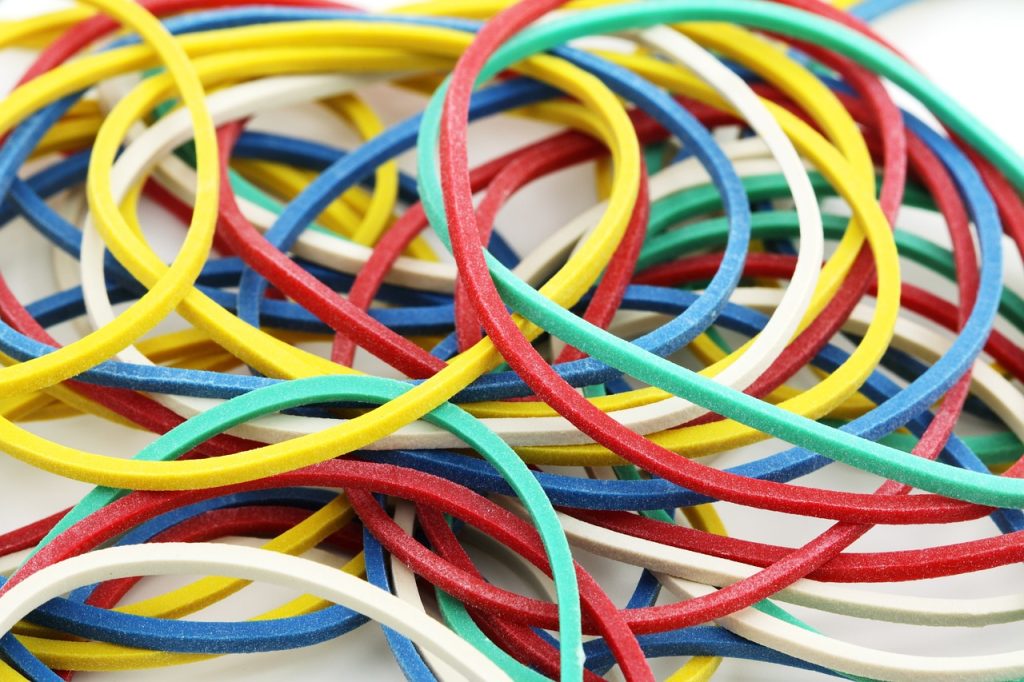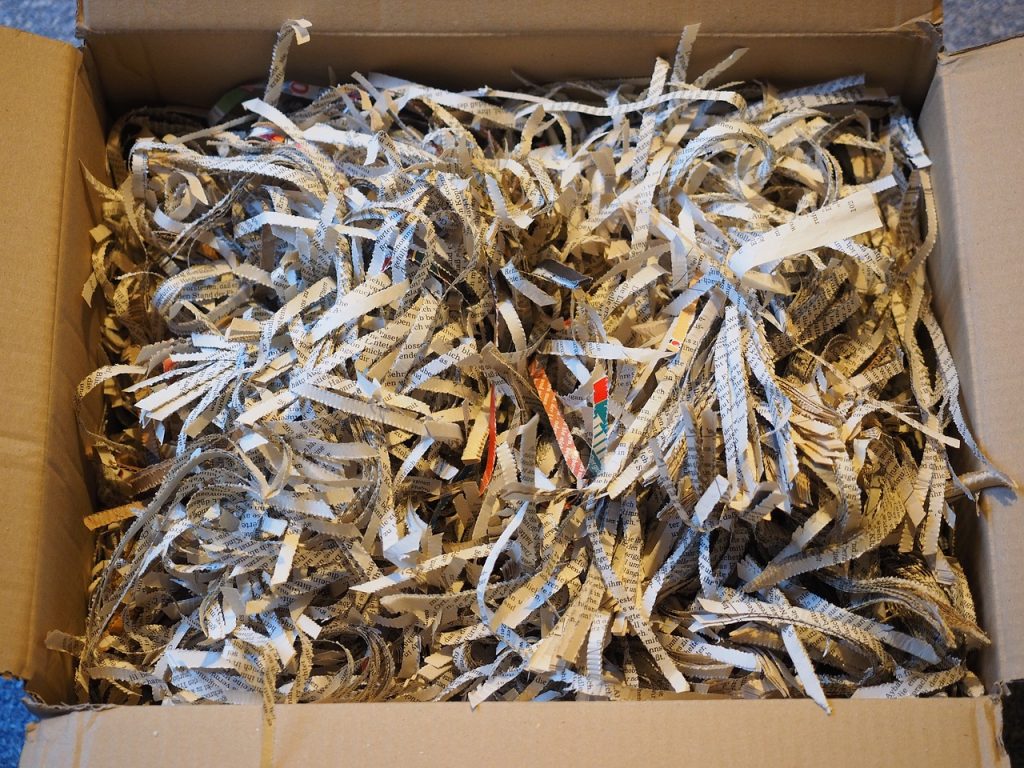- Reuse rubber bands in various applications like bundling pens, securing packaging, or as garden ties.
- If no longer usable, place rubber bands in a recycling bin that accepts them.
- Check your local area’s recycling rules to ensure rubber bands are accepted.
- If unsure about recycling rules, contact your recycling service provider for advice.
- Donate unused rubber bands to schools, art classes, or charities for reuse in projects or activities.
Guide on How to Recycle Rubber Bands
Looking for a way to recycle rubber bands? You’re in the right place! Here’s your comprehensive guide to recycling these looped wonders of elasticity, with many users still oblivious to the fact that rubber bands are indeed recyclable. Almost every household or office has a random bunch of loose rubber bands waiting to be put to good use, or better yet, recycled. Our task within this blog is to change that fact.
Contrary to popular belief, rubber bands aren’t an end-of-life product. With a little creativity and some green-thinking, you can either reuse them or find services that will recycle them back into valuable products. Rubber bands can be detrimental to wildlife and the environment if not disposed of properly, so let’s recycle, recycle, recycle!
One way to recycle rubber bands is by reusing them in various applications, from packaging items in your home to practical uses like bundling pens, securing packaging, or as garden ties. The list is endless! Remember, going green isn’t just about recycling; it’s also about reducing waste and repurposing items to extend their lifespan. Let’s aim for a greener planet by promoting recycled products and services!
If your rubber bands are no longer usable, don’t worry – recycling them in a recycling bin is another avenue. Several recycling services are incredibly eco-friendly and accept a range of recyclable materials, including rubber bands. Some services even offer curbside collection to make the process easier. However, remember to check your local area’s recycling rules, as not all recycling programs accept rubber bands. If in doubt, contact your recycling service provider for advice.
Lastly, you can donate your pile of rubber bands. Schools, art classes, or charities can make good use of them in their projects or activities. This might not be a direct way to recycle rubber bands, but it’s a great way to ensure they are reused and do not end up polluting the environment. Your little act can make a big green difference!
Stay current and in the know about all things recycling by visiting this blog regularly for news and updates. We’re committed to bringing you the latest tips, news, and insights on recycling different items, including rubber bands!
To sum up, rubber bands are recyclable and can be a valuable resource if recycled correctly. So let’s all make an effort to recycle and keep our surroundings green! Make the change with this guide! Let’s go green, turning one bin full of loose rubber bands at a time into eco-friendly products!
Examining the Patterns that Cause Wasted Rubber Bands
Every year, countless rubber bands end up in landfills or are simply thrown away as trash, becoming part of the ever-growing waste issue that our planet is dealing with. However, understanding the patterns that cause this waste is the first step to change this situation. These elastic bands are often found in supply drawers, offices, schools, post offices, and practically anywhere. They’re frequently disposed of after a single use, contributing to the ever-growing waste problem.
If we take a closer look at the patterns, we can see that the waste is often caused by a lack of understanding of what to do with the used rubber bands. Some people might think it’s not important to recycle rubber bands because of their small size, but that’s not the case. When you consider how many are used and thrown away every day, the impact adds up. You don’t need to be a school graduate from a top university to comprehend the significance of recycling.
Additionally, rubber bands are often sent via mail or packaged with other products, which can result in an oversupply for some individuals. Rather than discarding the surplus, there’s a sign of hope, you can recycle them. Having a box or bag reserved for discarded rubber bands can make it easier to collect and recycle them, rather than adding them to the pile of trash. Simple steps like these can make a considerable difference to our planet.
So, how can we combat the waste of rubber bands? Well, the first step is awareness. Send an email to those in your network or to local businesses, schools, and other organizations to encourage them to recycle their rubber bands. You can even use the power of social media to spread the message.
Everyone can participate in this simple change to help reduce waste and take a step towards a more sustainable future. A little goes a long way, and if everyone does their part, we can make a significant impact. So, the next time you come across a rubber band, don’t just shove it in a drawer or throw it in the trash. Instead, consider recycling it and making a difference. Your humble rubber band might just be a tiny bit of rubber, but it’s a lot more valuable than we give it credit for.
Green Solutions: The Importance of Recycling Rubber Bands
Every year on Earth Day, we’re reminded that it’s essential to do our bit for the planet. One easy way to make a big impact is to focus our climate action on the small things that add up, like recycling rubber bands. You may wonder why rubber bands, of all things, but when you consider the energy needed to produce natural rubber and the potential impact of landfill disposal, green matters start in the smallest places.
Recycling, as a sustainability practice, isn’t always given its due. You’d think we’d have mastered recycling everything by now, but rubber bands present a unique challenge. Despite this, it’s critically important to the Sierra Club and other environmental groups to further recycling efforts for those commonplace, capable of making a substantial difference in our energy consumption. It’s easy to underestimate just how much energy can be saved through recycling. Recycling even a fraction of our rubber bands could make a major impact by reducing landfill and saving energy in manufacturing new products.
Rubber bands are universally useful, but they, unfortunately, end up in a lot of places they shouldn’t, particularly the commercial sector where they are frequently used and as quickly discarded. Meanwhile, events where rubber bands are distributed freely add to the challenge. At such events, unused rubber bands are often simply thrown away. It’s a pattern that we need to interrupt, for sustainability’s sake.
But how do you recycle rubber bands? Many recycling programs don’t accept them, and attempting to compost them isn’t a viable solution. While natural rubber is indeed compostable over time, the process is not as efficient or effective as with some organic materials. Instead of trying to compost them at home, you might donate them. Often, charities, schools, and other organizations are happy to take your unwanted rubber bands off your hands.
Creative solutions are also cropping up for the recycling of rubber bands. Some commercial outlets are starting to offer programs where you can send back used rubber bands. They clean and process these bands, then reincorporate them into new products, closing the loop on waste. It’s an inspiring trend on the journey towards a plastic-free world.
To sum it all up, the importance of recycling rubber bands needs more awareness. Despite the challenges, it’s essential that we keep seeking solutions and making green changes, no matter how small they may seem. And really, what could be smaller, or have a bigger impact, than a rubber band?




